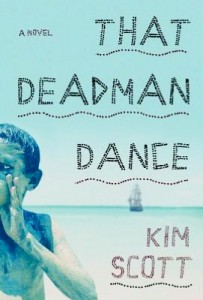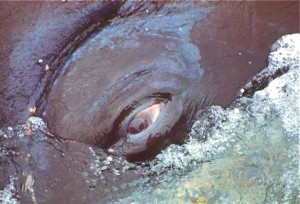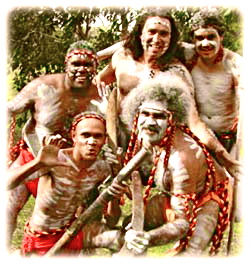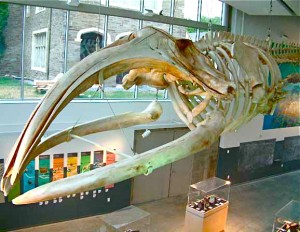Note: This novel was WINNER of the Miles Franklin Award, Australia’s most prestigious literary award, in 2011. In 2000, the author was also WINNER of that award for Benang.
“My people and I are not as good traders as we thought. We thought making friends was the best thing, and never knew that when we took your flour and sugar and tea and blankets that we’d lose everything of ours. We learned your words and songs and stories, and never knew you didn’t want to hear ours.”
 Numerous authors, in recent years, have written about the settlement of Australia and the taking of aboriginal lands by white settlers, something the Australian government has recently tried to rectify through legislation and for which they have apologized. Kate Grenville’s The Lieutenant, a fascinating story based on the real life and notebooks made by Lt. William Dawes, details the settlement of New South Wales in 1788 – 1790. Richard Flanagan’s Wanting, a winner of four literary prizes, focuses on the Victorian takeover of Van Dieman’s Land – his native Tasmania – and the “civilizing” of some aborigine children between 1839 and 1854. Adrian Hyland has taken a somewhat different tack, writing a contemporary mystery series starring half-aborigine Emily Tempest. The first book in the series, Moonlight Downs (known in the UK as Diamond Dove), winner of the prestigious Ned Kelly Award, brings the theft of aborigine lands up to date.
Numerous authors, in recent years, have written about the settlement of Australia and the taking of aboriginal lands by white settlers, something the Australian government has recently tried to rectify through legislation and for which they have apologized. Kate Grenville’s The Lieutenant, a fascinating story based on the real life and notebooks made by Lt. William Dawes, details the settlement of New South Wales in 1788 – 1790. Richard Flanagan’s Wanting, a winner of four literary prizes, focuses on the Victorian takeover of Van Dieman’s Land – his native Tasmania – and the “civilizing” of some aborigine children between 1839 and 1854. Adrian Hyland has taken a somewhat different tack, writing a contemporary mystery series starring half-aborigine Emily Tempest. The first book in the series, Moonlight Downs (known in the UK as Diamond Dove), winner of the prestigious Ned Kelly Award, brings the theft of aborigine lands up to date.
 Kim Scott’s That Deadman Dance is unique, however. The son of an aborigine (Noongar) father and white mother, Scott has written this novel from the Noongar point of view, bringing it to life through the stories surrounding Bobby Wabalanginy and his family, who are named for members of the author’s own family. From his earliest days, Bobby has been connected to whales, and he remembers Menak, the King of the Noongars (and his father), telling him about sliding inside a whale’s blowhole, warming himself beside its heart, and joining his voice to the whale’s roar, a story Bobby vividly imagines reliving himself. At one point, he even describes his mother acquiring him “when [a still live] whale came up on the beach.” All the people there had seen “the tiny shadow, that flickered in the water as the light died in the whale’s eye, and the old man—Bobby’s father—took hold of his stone knife and cut the whale.”
Kim Scott’s That Deadman Dance is unique, however. The son of an aborigine (Noongar) father and white mother, Scott has written this novel from the Noongar point of view, bringing it to life through the stories surrounding Bobby Wabalanginy and his family, who are named for members of the author’s own family. From his earliest days, Bobby has been connected to whales, and he remembers Menak, the King of the Noongars (and his father), telling him about sliding inside a whale’s blowhole, warming himself beside its heart, and joining his voice to the whale’s roar, a story Bobby vividly imagines reliving himself. At one point, he even describes his mother acquiring him “when [a still live] whale came up on the beach.” All the people there had seen “the tiny shadow, that flickered in the water as the light died in the whale’s eye, and the old man—Bobby’s father—took hold of his stone knife and cut the whale.”
 Now, at about age nine, Bobby travels between his own tribal group and that of the “horizon people” who have come to his land. The kindly Dr. Cross is teaching him to read at his own home, but Dr. Cross has the “coughing disease,” which has also taken the lives of many of Bobby’s people. By 1833 – 1835, Bobby has made several trips to sea as a “spotter,” with the whalers and settlers, his sensitivity to whales based on the fact that he “came from ocean and whales,” and can hear them breathing and catch their rhythm.
Now, at about age nine, Bobby travels between his own tribal group and that of the “horizon people” who have come to his land. The kindly Dr. Cross is teaching him to read at his own home, but Dr. Cross has the “coughing disease,” which has also taken the lives of many of Bobby’s people. By 1833 – 1835, Bobby has made several trips to sea as a “spotter,” with the whalers and settlers, his sensitivity to whales based on the fact that he “came from ocean and whales,” and can hear them breathing and catch their rhythm.
 “Laughing and loved, Bobby Wabalanginy never learned fear; not until he was pretty well a grown man did he ever even know it.” An enthusiastic dancer of folk dances, Bobby tells stories through his dancing, and in his interpretation, even the special Deadman Dance “was a dance of life, a lively dance for people to do together, each man dancing same as his brothers except for the one man on his own, leading them. It was a dance from way past the ocean’s horizon.” The whites with whom he associates and sometimes lives, are always enchanted by him when he and his people paint themselves for dancing, and Bobby can always win them over with his lively attentions to them.
“Laughing and loved, Bobby Wabalanginy never learned fear; not until he was pretty well a grown man did he ever even know it.” An enthusiastic dancer of folk dances, Bobby tells stories through his dancing, and in his interpretation, even the special Deadman Dance “was a dance of life, a lively dance for people to do together, each man dancing same as his brothers except for the one man on his own, leading them. It was a dance from way past the ocean’s horizon.” The whites with whom he associates and sometimes lives, are always enchanted by him when he and his people paint themselves for dancing, and Bobby can always win them over with his lively attentions to them.
As more and more people come to King George Town, including British, Yankee whalers and the French, however, these “horizon people” begin to claim more property, and each time they do, they must take it from the Noongars. Noongar women are stolen, and both blacks and whites begin to deceive each other, provoking vengeance. By the time Dr.Cross dies, he is already worried about the future, but, still hoping that peace will prevail, he asks to share the grave of his close friend, Wunyeran, Bobby’s uncle.
more property, and each time they do, they must take it from the Noongars. Noongar women are stolen, and both blacks and whites begin to deceive each other, provoking vengeance. By the time Dr.Cross dies, he is already worried about the future, but, still hoping that peace will prevail, he asks to share the grave of his close friend, Wunyeran, Bobby’s uncle.
Though it is divided into parts which have dates, the novel is not completely linear. Bobby is larger than life, a mythic figure, absorbing and relating many of the stories of his people, including one in which he “dies” and flies through the air. At several points, he is speaking to the reader as a very old man, entertaining tourists with his lore and throwing flaming boomerangs for their entertainment. Ultimately, he muses that “Once he was a whale and men from all points of the ocean h orizon lured him close and chased and speared and would not let him rest until (blood clotting his heart) [he] led them to the ones he loved, and soon he was the only one swimming.” Eventually, “there were no more of his people and no more kangaroo and emu and no more vegetable. After the white man’s big fires and guns and greed, there was nothing.” The symbolism of the whale is clearly articulated.
orizon lured him close and chased and speared and would not let him rest until (blood clotting his heart) [he] led them to the ones he loved, and soon he was the only one swimming.” Eventually, “there were no more of his people and no more kangaroo and emu and no more vegetable. After the white man’s big fires and guns and greed, there was nothing.” The symbolism of the whale is clearly articulated.
Many exciting subplots evolve in the course of this hypnotic and important novel, told as an old-fashioned, “once upon a time” narrative, with incredible scenes of the slaughter and rendering of whales bracketing much of the action. Bobby, Wooral, Wunyeran, Menak, and Manit follow the seasons, wet and dry, warm and cold, and as the action unfolds, much of their lives as wanderers becomes real – their values, their feelings, and their intense love of nature and the land. Bobby’s friendship with the whites, including the young son and daughter of ambitious Geordie Chaine, alarms his own family, even as it begins to alarm the Chaines. Few of the whites are happy. The convict Skelly, about to be freed, wants to start a new life there but has few resources. Soldier Arthur Killam, w ho has been the pilot and harbormaster, finds that running a grog shop is unprofitable when the whales run out and the whalers stop coming. The two black boys that Chaine has brought over as servants on the boat from England get tired of being considered inferior. And Jak Tar, who has jumped ship to be a sheep herder, misses the life of the sea. Tensions approach the breaking point.
ho has been the pilot and harbormaster, finds that running a grog shop is unprofitable when the whales run out and the whalers stop coming. The two black boys that Chaine has brought over as servants on the boat from England get tired of being considered inferior. And Jak Tar, who has jumped ship to be a sheep herder, misses the life of the sea. Tensions approach the breaking point.
As events and the growing population take their course, one culture has obviously been poised to win from the outset, and one to lose. The ending, though completely expected from the glimpses one gets of Bobby’s old age throughout the novel, is nevertheless devastating, emotionally. Bobby, like his ancestors, deserved better. The novel is breathtaking and important, and few readers will finish it without feeling exhausted by its intensity. Superb!
Photos, in order: The author’s photo by Tom Blachford appears on http://blogs.wsj.com.
The amazing photo of a whale’s eye, actually photographed in Albany, Western Australia, is from http://www.whaleworld.org
The Noongar dancers are from http://www.unitedtribespowwow.com (See, also, the YouTube video at end.)
Salmon Holes Beach, seen on http://www.westernaustralia-travellersguide.com, is where salmon hide from sharks and whales during the whaling season, a phenomenon Bobby describes in the novel.
The early settlers sometimes used the jawbone from the right whale skeleton, seen on http://thesciencebeneaththesurface.wordpress.com, as a support for tents and houses. It is known as the “right” whale because it was the whale that had the most oil, and, hence, the “right” whale to kill.
Albany, in the SW part of Australia, is on King George Sound, where the action of this novel takes place. The map is from: http://www.vacationstogo.com
Part of this YouTube video of Noongar dancers and their didgeridoo is taken at night, and is a bit hard to see. I found that by cupping my hands around my eyes that I was able to see it quite well. Worth the effort!
